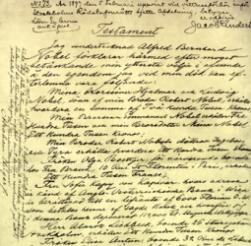Don't put too much stock in predictions about legacy income, says Richard Radcliffe.
Do we know the truth about the future of legacy income? No.
What particularly worries me is the level of misinformation which pervades and infests the sector which produces un-truths. This infected information is dangerous. It spreads its tentacles into the planning departments who make dangerous assumptions, and those assumptions are picked up and used as ‘evidence’ by decision-makers.
The outcome is that misinformed judgements are made concerning targets and budgets for legacy numbers, legacy values and legacy income overall.
Where does this information come from? Well, I have to admit I am the purveyor of some of this information but so are others. I am not saying that the information which I and others supply is wrong, but information is often too limited in its scope or too general to be relevant to a particular causal area.
Legacy fundraising is affected by a huge number of variables and an equal number of influences. So let’s look at some of the information which can so easily be misinterpreted. Firstly, is willmaking even an issue? We do not know how many people actually have wills and we will never know.
Are we really interested in ‘the general public’? Or should we focus on typical donors and volunteers who are responsible in terms of life planning? Of the last 5,000 donors aged 20-101 I have met, 77 per cent already have a will. The best prospects almost always have.
Wills can be part of the legacy communications programme but it is causally sensitive: charities dealing with vulnerable older people, for instance, can promote lasting powers of attorney. Charities dealing with young people can promote discretionary trusts to protect them and any inheritance they gain. But art galleries and museums should not touch the testamentary environment – it just kills the joy of a visit! Each cause is different and yet wrong assumptions can be made on the ‘importance’ of will-writing as part of a legacy campaign.
About 6 per cent of those who die leave a legacy, but the rate is 35 per cent for donors and volunteers. And yet a survey of 1,000 people by nfpSynergy said 7 per cent of respondents had already made legacy gifts in their wills. This research also said “43 per cent had not made wills and would not consider leaving legacies or were unsure”.
If 6 per cent leave legacies then presumably up to 94 per cent are not yet sure, but is this information of any use?
The number of charitable estates is horrendously variable. The percentage of wills containing a charitable bequest ranged between 9 per cent and 15.7 per cent between 1997 and 2008.
Why this variance? Can we ever really know what will happen? Whatever we do, and we must all do as much as we can, we do not know the following: when anyone will take action and put a gift in their will; whether that gift will stay in their will; and how much they will be worth when they die.
Of course the worst guessing game is measuring by pledgers. Yet we still hear of telemarketing campaigns whose success is measured by pledger rates which many years later are found to be so wildly inaccurate it is scary.
The most urgent need for all of us in legacy fundraising is to inform leaders and decision-makers of the almost impossible nature of legacies and how they cannot be accurately forecasted. In an ideal world the Institute of Fundraising should issue a document which recommends a more open and variable ‘template’ which reduces the short-term pressure on legacy fundraisers to provide a totally unrealistic measurement.
Richard Radcliffe is a legacy consultant at Smee and Ford









